The India Semiconductor Workforce Development Program (ISWDP) is a unique and comprehensive initiative tailored to bridge the process technology and device design skill gap in the swiftly expanding semiconductor sector. It's a meticulously designed course, covering the foundations, diving deep into the nuances of device/technology development skills, and offering a hands-on approach through a microelectronics lab experience. Beyond the core curriculum, the program provides an unparalleled practical experience, offering students and industry professionals the chance to work on state-of-the-art research and development tools that are used by the semiconductor industry for semiconductor device and technology development.
Furthermore, ISWDP also bridges the gap between academic theories and real-world applications. The curriculum is crafted to overwhelm and fascinate participants to pursue a career in semiconductors, to think beyond textbooks, and to understand the intricacies involved in the development of semiconductor technology. The live virtual program comprises four levels, i.e., Level 1, Level 2, Advance, and Custom. Launched in March 2024, the program runs 4 cohorts throughout the year (view the schedule here: https://iisc-iswdp.org/schedule.php. The program has successfully completed two cohorts with over 600 participants from both industry and academia.
The India Semiconductor Workforce Development Program is strategically designed to achieve critical goals that support both the growth of India's semiconductor industry and the global technological landscape:
Developing Skilled Professionals: At the core of our mission is the commitment to cultivate a robust pipeline of skilled and highly inspired professionals. Through innovative education that blends rigorous academic coursework with practical, hands-on training, and active industry collaboration, we aim to equip participants with the advanced skills necessary to drive forward India’s semiconductor industry. Our comprehensive approach ensures that graduates are not only knowledgeable but also capable of contributing to and leading in a highly competitive field.
Cultivating Future Leaders: We are dedicated to inspiring and preparing the next generation for a future in semiconductors—this includes students, faculty, engineers, and professionals. Our program is designed to foster expertise, encourage innovation, and develop the skills necessary for global leadership. By exposing participants to the frontiers of semiconductor technology and its applications, we aim to ignite a lifelong passion for this dynamic field, setting them on a path to becoming pioneers of technological advancement.
Bridging Talent Gaps: A key objective of ISWDP is to serve as a bridge between industry demands and academic output. Having closely worked with semiconductor fabs and various development centers, we have identified the specific skills and capabilities required by the industry. Our program is tailored to prepare individuals who not only meet these requirements but are also primed for further training and specialization. Together, these objectives underscore our dedication to enriching the semiconductor ecosystem with talented individuals who are prepared to innovate, lead, and excel at a global level.
The India Semiconductor Workforce Development Program (ISWDP) is a cornerstone for individuals and institutions aiming to excel in the semiconductor industry. It offers an avenue to delve deep into semiconductor technology, equipping participants with both foundational and advanced knowledge.This comprehensive program, supported by IISc and industry leaders such as Synopsys, and Samsung Semiconductor India Research (SSIR), offers a multifaceted approach to learning, blending academic rigor with practical industry insights. Whether you're a fresh graduate or an industry professional, the program offers something for everyone, ensuring a clear path to leadership in the semiconductor domain
A. For Students:
The program won't just teach; it will inspire. It will encourage students to visualize the processes and to connect the dots between what they learn and how it applies in the industry. It gives practical experience in semiconductor design and process, preparing the students to tackle industry challenges immediately upon graduation. The program benefits students through:
- Hands-On Learning: Students engage with advanced computational tools like TCAD (Technology Computer-Aided Design), providing a real-world grasp of semiconductor design and process.
- Industry-Relevant Skills: The curriculum covers the entire gamut of semiconductor development, from fundamental concepts to complex device processes and device design techniques, ensuring that students are well-prepared for the industry.
- Real-World Application: The integration of theoretical knowledge with practical applications allows students to experience and solve real semiconductor problems.
- Internship Opportunities: Students can access merit-based internships in both virtual and physical formats, complete with certifications, enhancing their practical experience and industry relevance.
- Project Implementation: The program encourages students to propose and implement their projects, fostering creativity and problem-solving skills.
B. For Aspiring Professionals:
For those already in the field or looking to enter, ISWDP, when participants credit all the offered levels, provides tools and experiences to deepen their expertise and advance their careers:
- Interactive Sessions: : Led by experts, these sessions delve into the complexities of semiconductor processes, enhancing understanding and sparking curiosity
- Problem-Solving Workshops:: Participants tackle industry-relevant scenarios that hone their analytical and problem-solving skills, preparing them for real-world challenges.
- Exposure to Industry Practices: Our collaborations with leading technology companies enable participants a firsthand look at the semiconductor industry’s practices, challenges, and innovations.
- Custom Modules: : Thanks to growing industry interest, ISWDP offers custom modules on specialized topics like Fabrication, Characterization, and Packaging at no additional cost, ensuring that learning is continually updated and relevant.
C. For Academic Institutions
Academic institutions can reap numerous benefits by participating in ISWDP. The program offers substantial educational opportunities and unique advantages that enhance its curriculum and reputation for its generations of students. These include:
- Bulk Registrations: Institutions benefit from attractive discounts on bulk registrations, making advanced education more accessible to their students.
- New Technical Offerings: : The program continuously expands its offerings, introducing Custom modules sponsored by prominent industry players starting from Cohort 3 in September 2024.
- Internship Opportunities: Institutions can facilitate merit-based internships for their students, providing valuable industry exposure and experience.
- Certificates of Appreciation: Institutions supporting and encouraging their students to pursue a career in semiconductors receive acknowledgment certificates from the program, enhancing their prestige and demonstrating their commitment to cutting-edge technological education.
D. A Boost for Industries
The global semiconductor shortage presents not only a workforce gap but also a broad supply chain and production challenge. By equipping a new generation of engineers with the necessary skills, ISWDP helps industries innovate faster, maintain higher quality standards, and find quicker solutions to complex problems, thereby enhancing the overall health and capacity of the semiconductor industry.
Join us to start your journey in mastery, innovation, and global leadership as we together shape the future of technology and create a new legacy of Indian engineering excellence in semiconductors.
Register now at: https://iswdp.registeryourseat.in





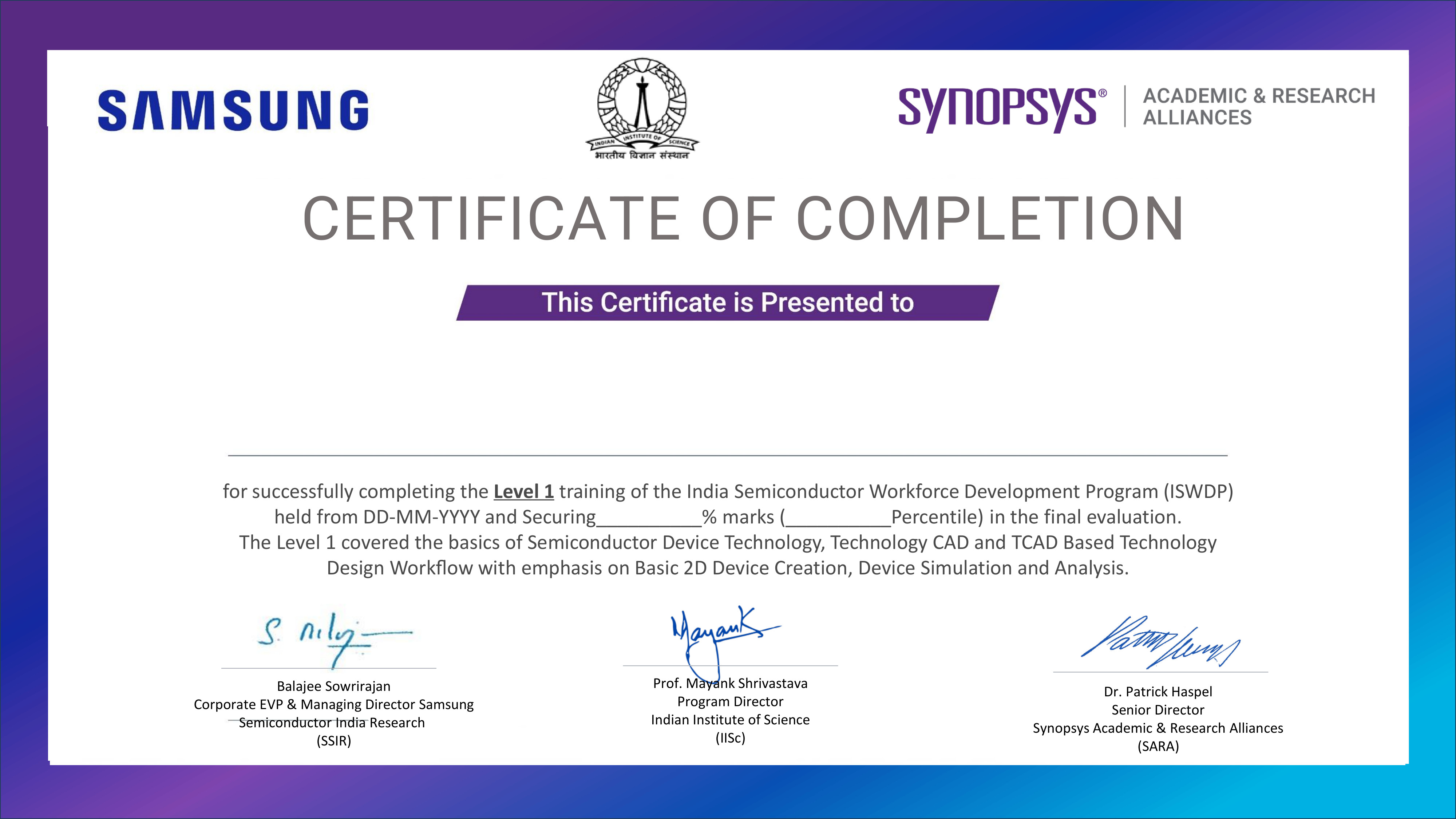
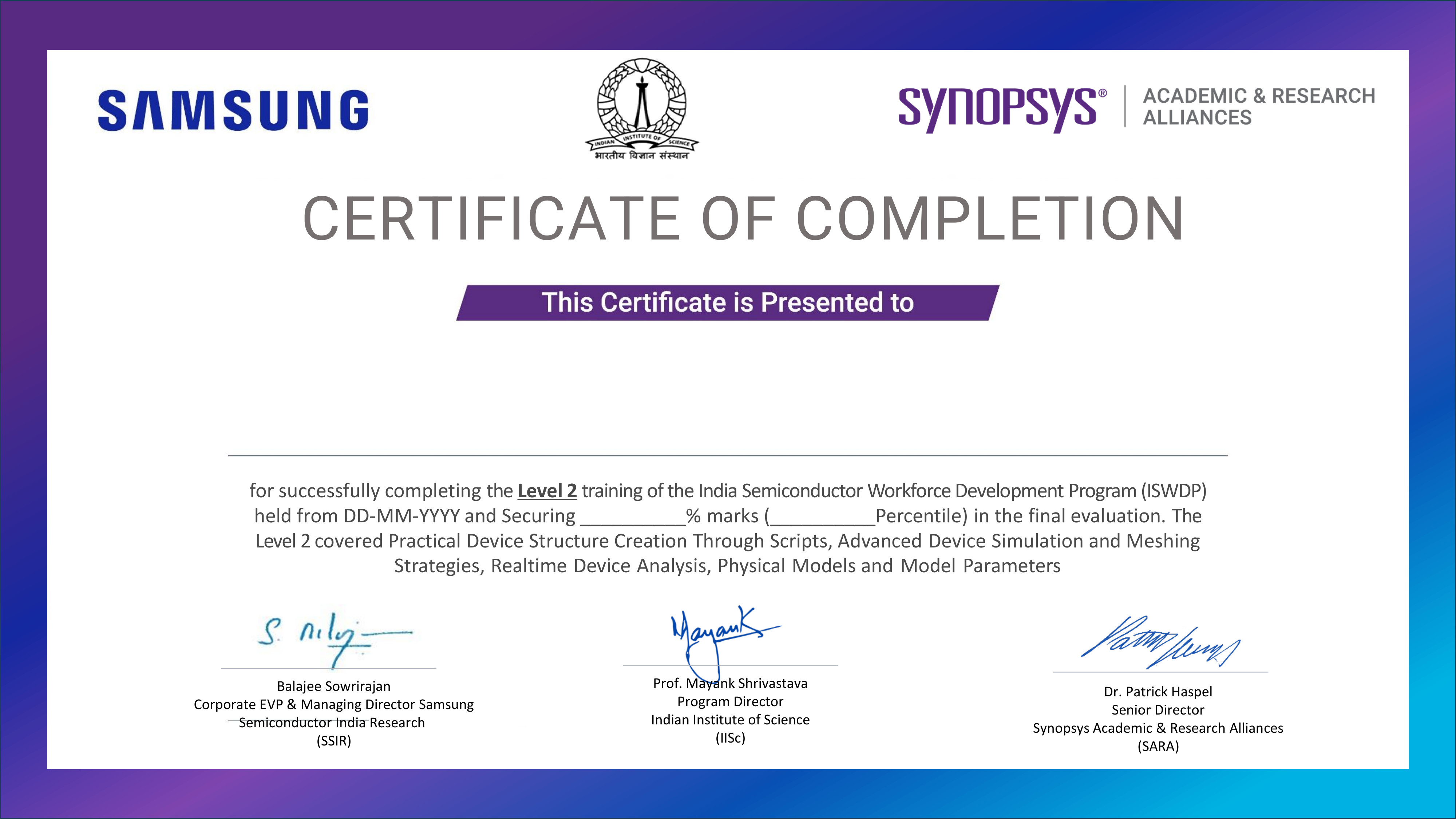
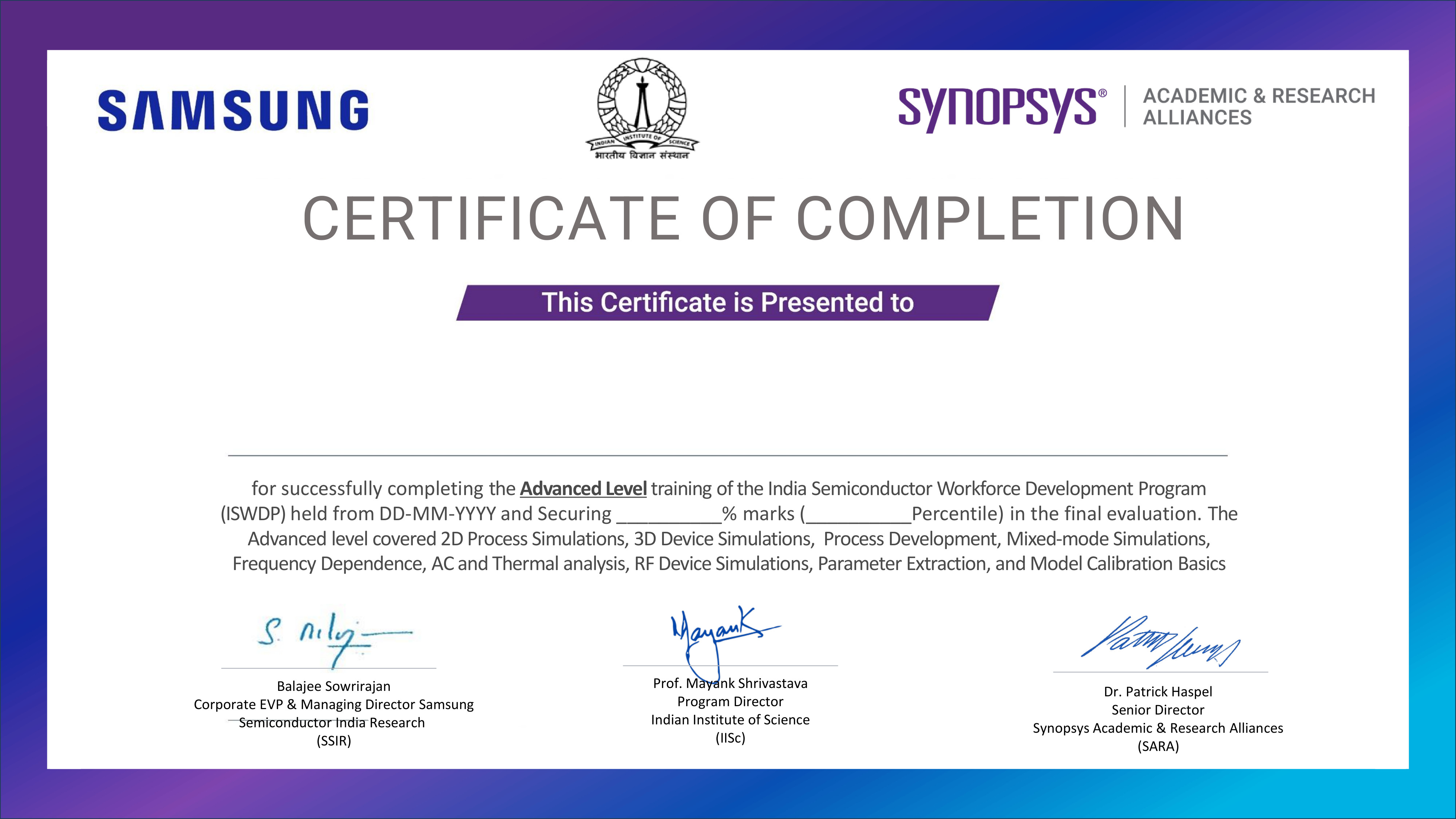
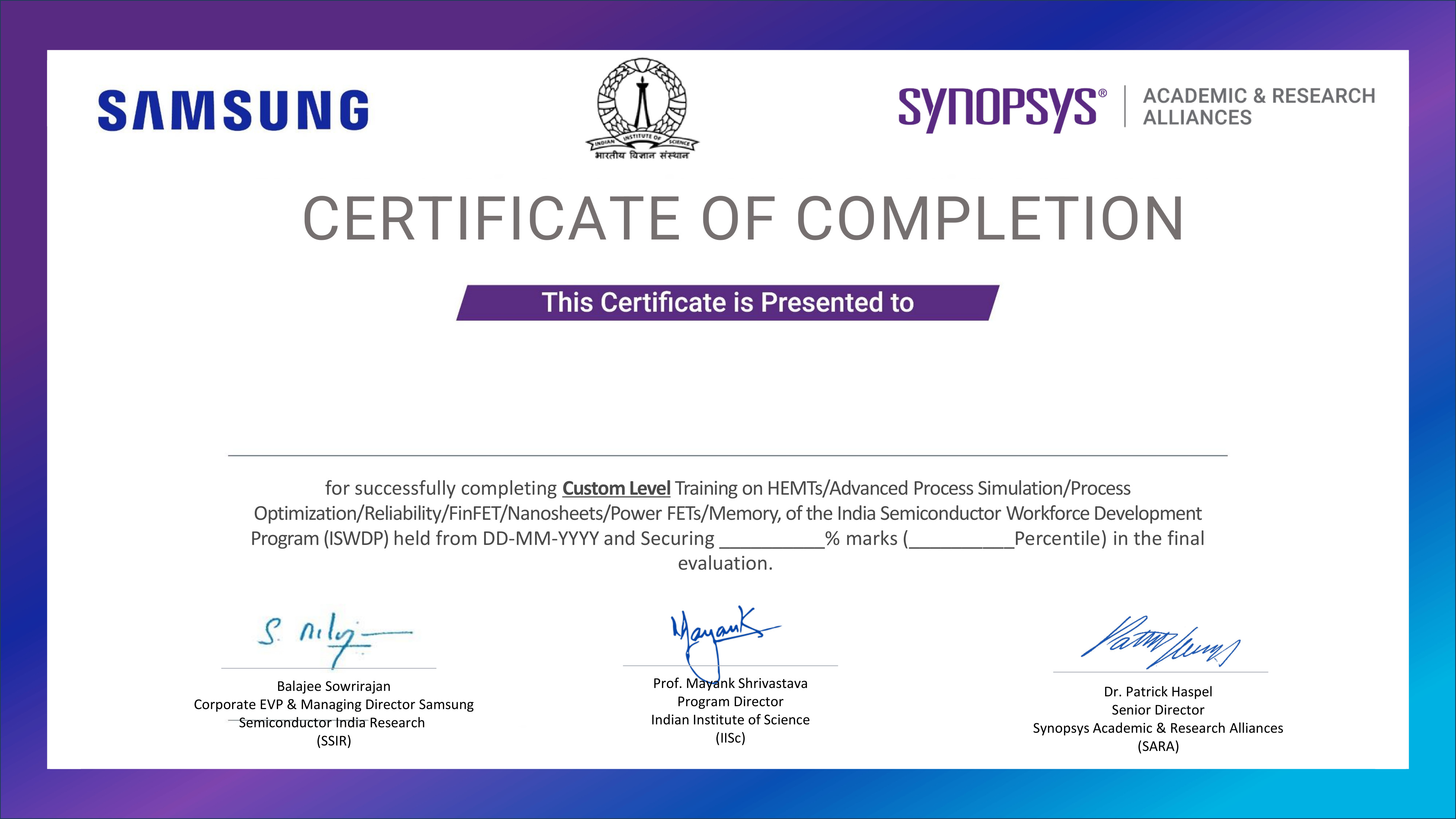
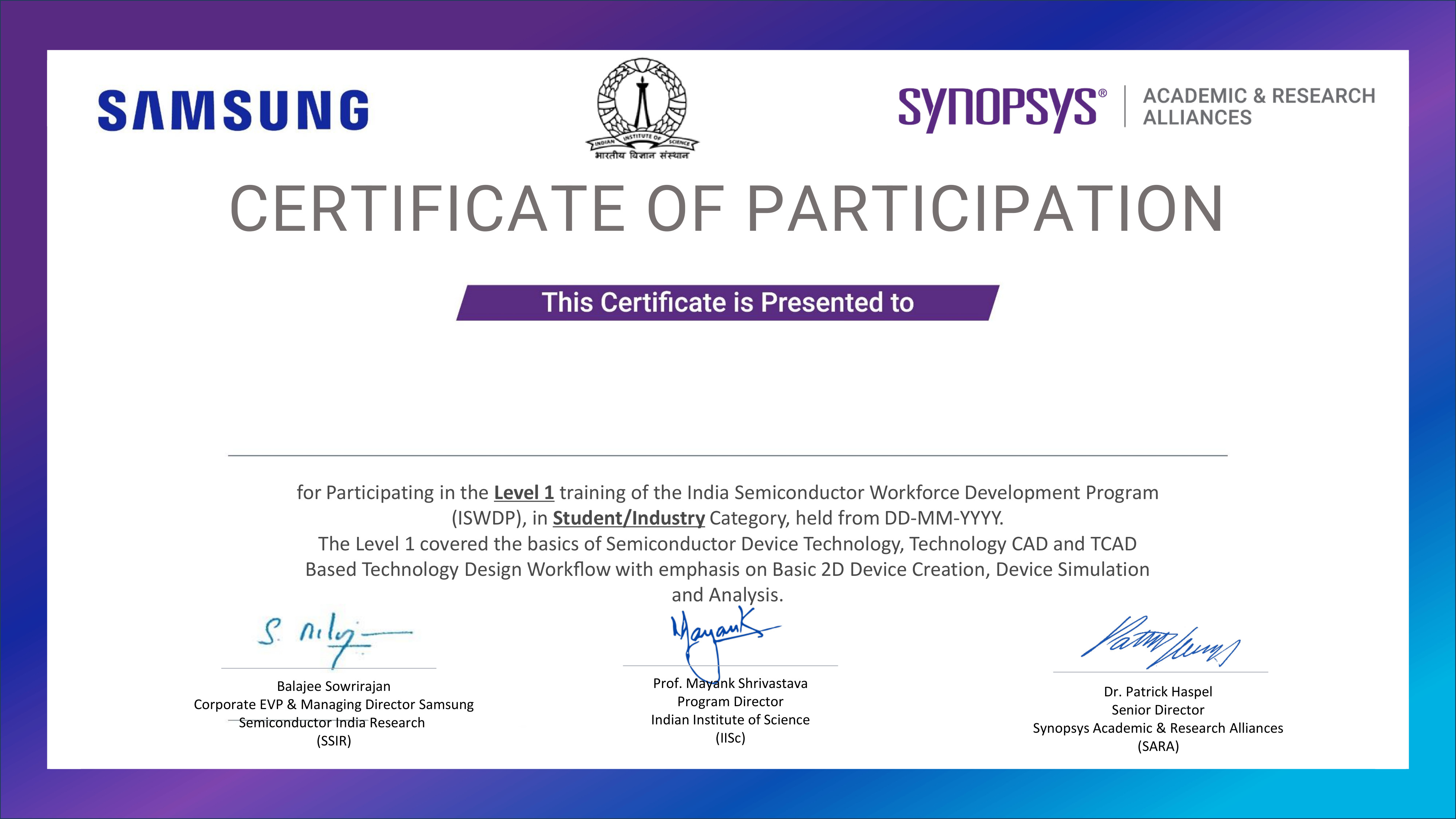
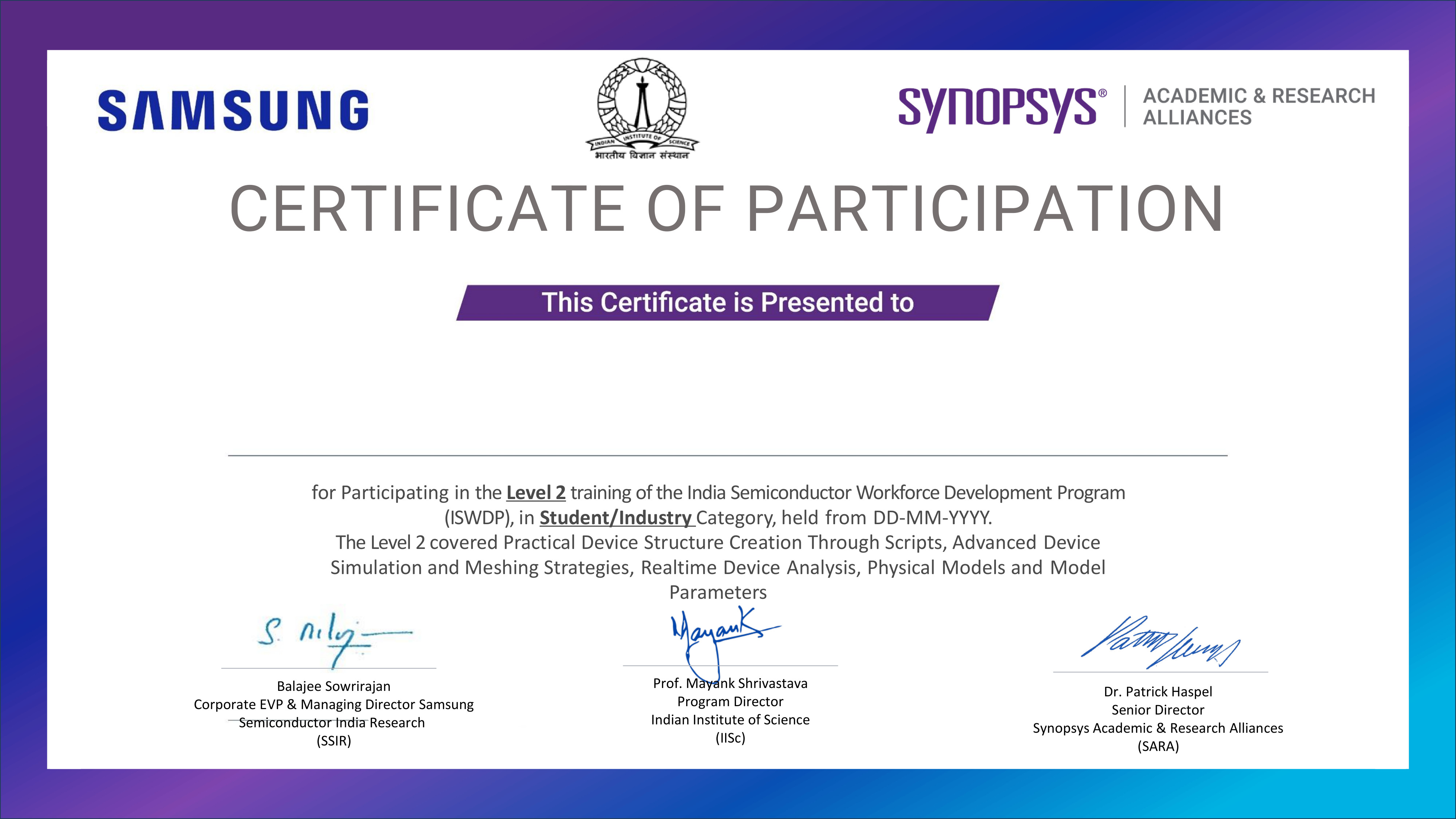
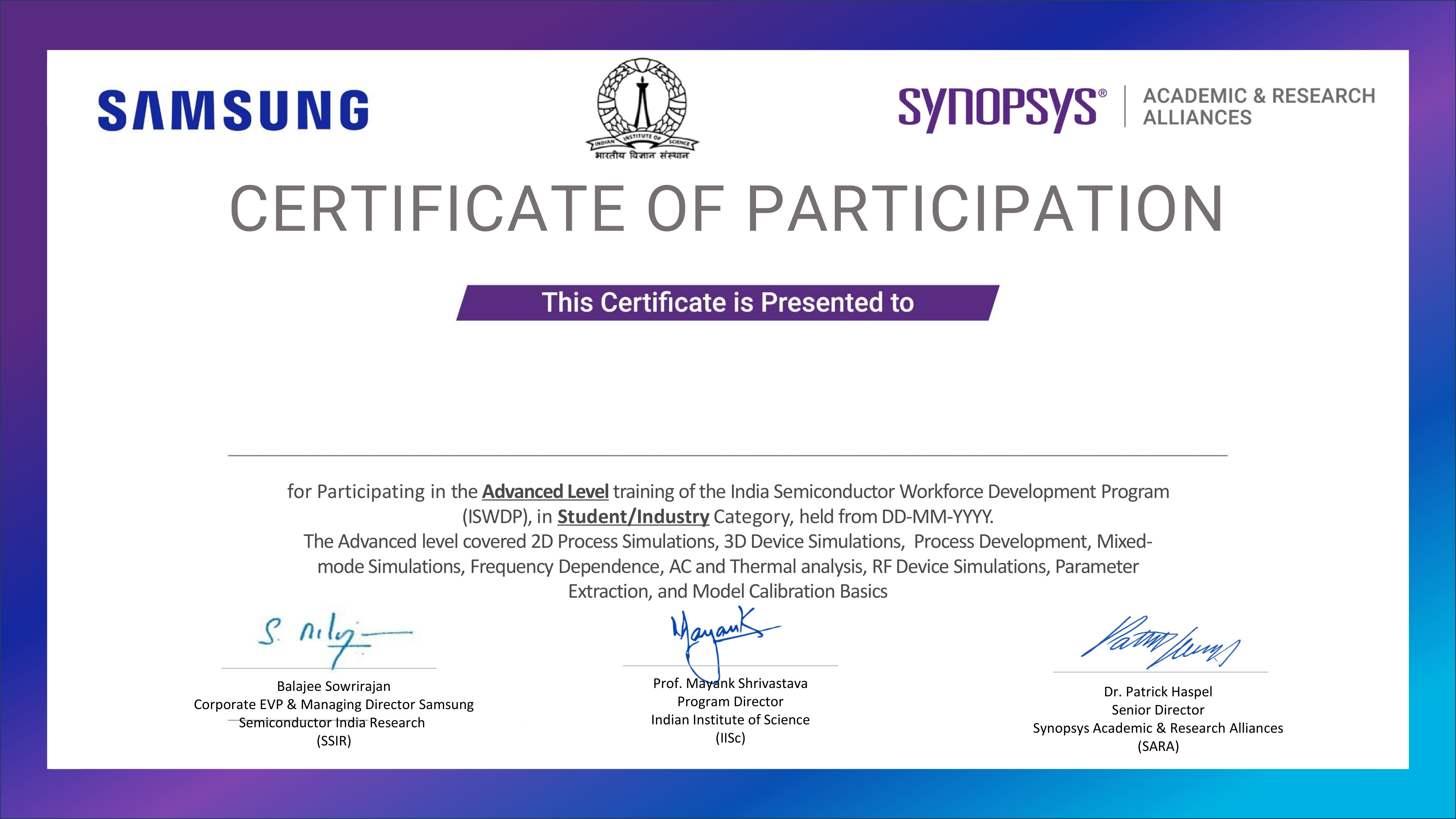
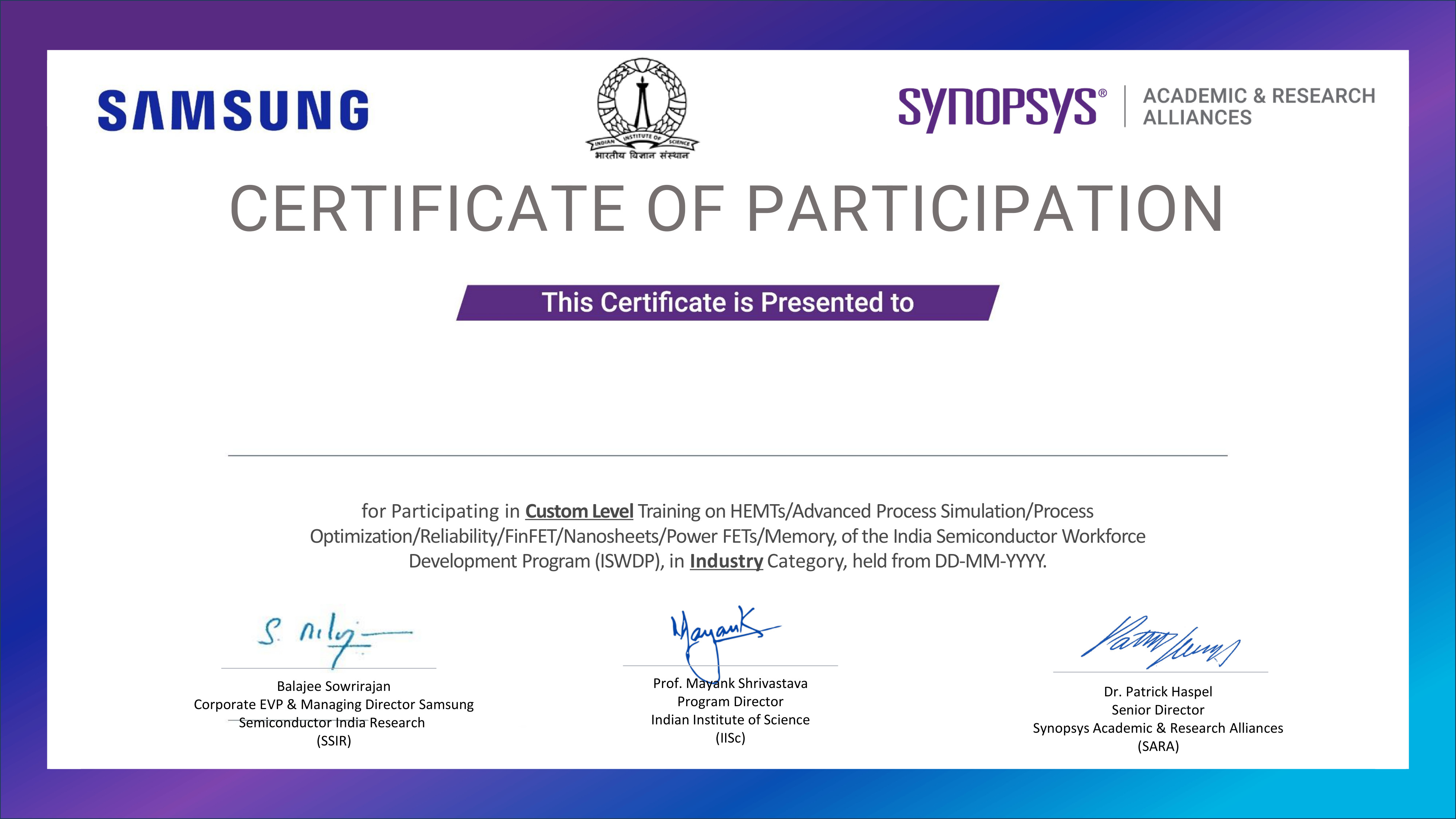
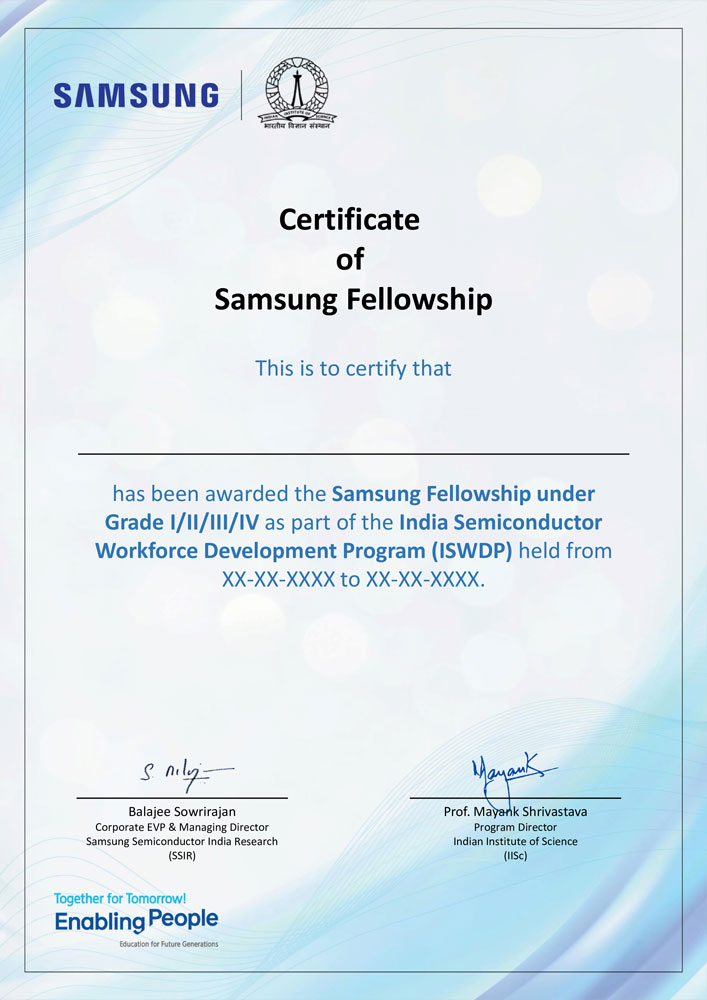

![]() nimithap@iisc.ac.in )
nimithap@iisc.ac.in )